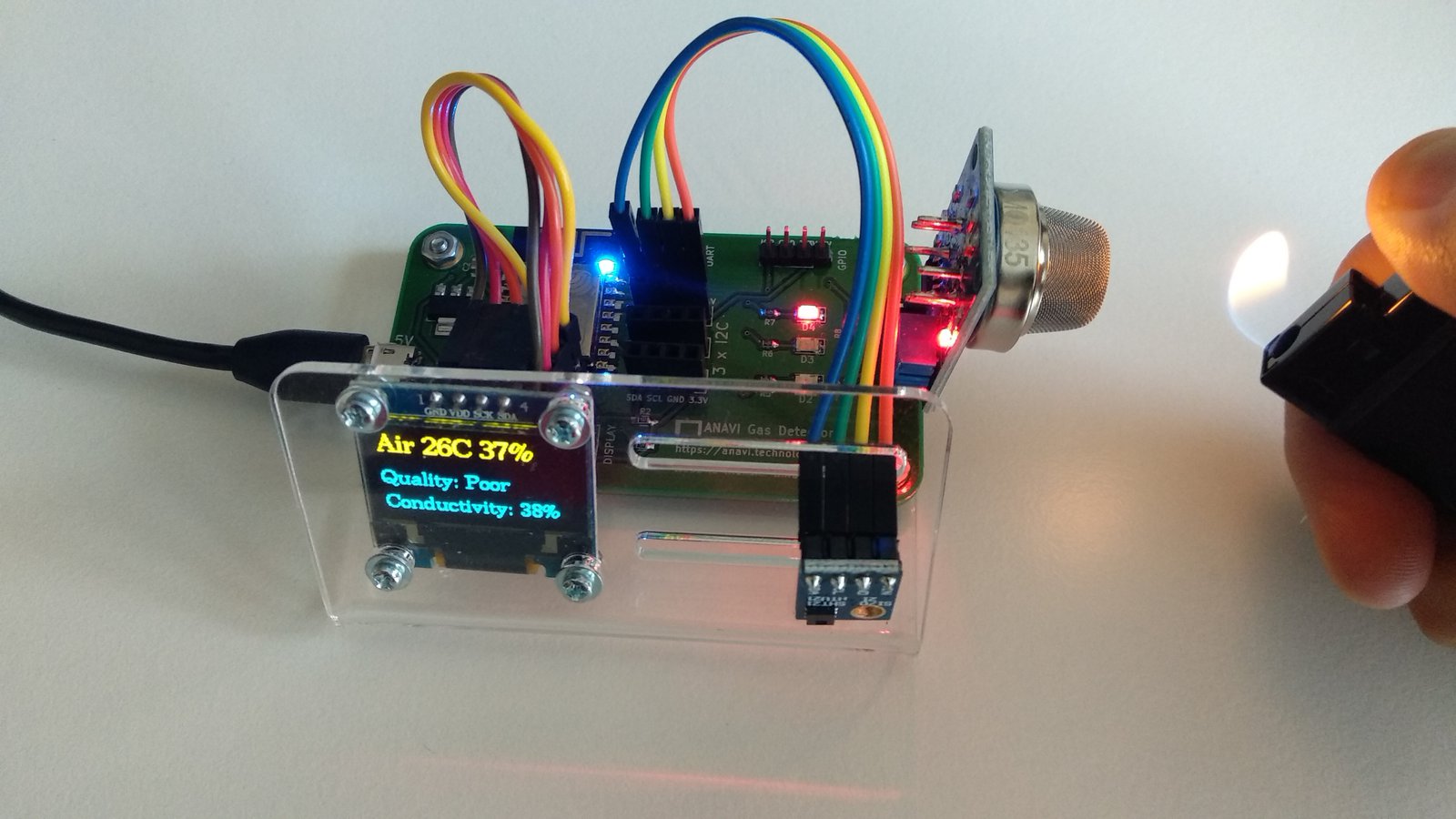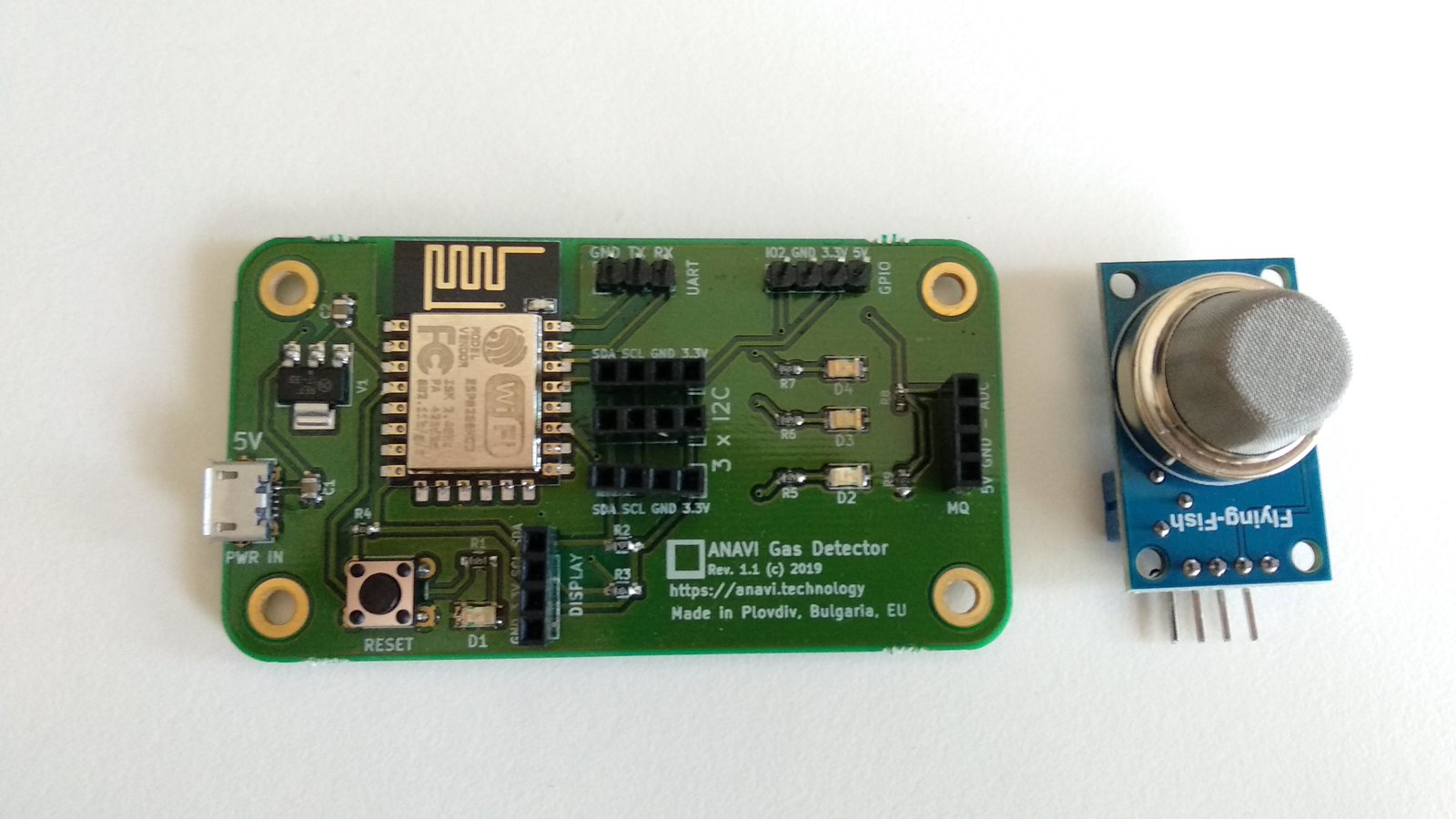Project update 3 of 16
[VIDEO] MQ-135 Gas Sensor
Thanks to your support the crowd funding campaign of ANAVI Gas Detector is enjoying huge success! All stretch goals have been already achieved and as promised I am sharing with you new video tutorials. In this video you will learn all you need to know about MQ-135 gas sensor module for monitoring indoor air quality.
All kits of ANAVI Gas Detector include MQ-135. This low-cost analog sensor is used in air quality control equipment for buildings and offices. It is suitable for detecting of NH3, NOx, alcohol, Benzene, smoke, CO2 and other dangerous gases.
The video explains how MQ-135 works and shows three experiments to demonstrate how the sensor detects flammable gases, smoke and alcohol.
MQ-135 has a built-in heater that provides the required work environment for the sensor. The heater operates at 5 V. There is a sensitive layer which has lower conductivity in clean air. The sensor’s conductivity gets higher as the gas concentration rises. Depending on the conductivity, the sensor outputs analog data in a range of 0 to 5 V. ANAVI Gas Detector is powered by ESP8266 which has a built-in analog to digital converter (ADC) with range of 0 to 1 V. Resistors have been added to the printed circuit board to act as a voltage divider and to fix the range difference. This way ANAVI Gas Detector reads correct data from the analog output of MQ-135.
The gas sensitivity of MQ-135 depends on the temperature and humidity influence. Therefore the advanced and developer kits of ANAVI Gas Detector include HTU21D I2C sensor module for temperature and humidity.
As explained in the video and shown in the datasheet of the sensor, MQ-135 requires calibration. At first launch the so called "burn-in" (or preheat) procedure must be performed by leaving the sensor working for 48 hours in a room with a clean air.
Have a look at the video to learn more details about MQ-135. Thank you for supporting the entirely open source project ANAVI Gas Detector. Stay tuned for more video and updates.
Thanks, Leon

